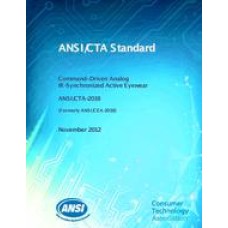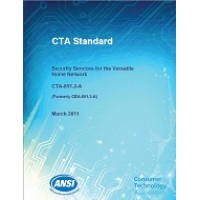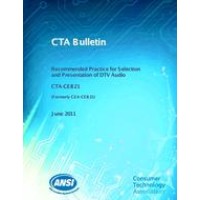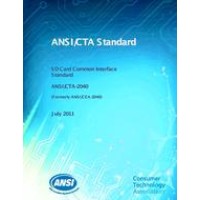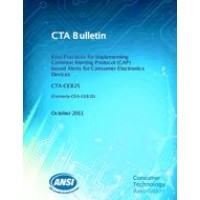CEA-2038 defines a standard method of Infrared (IR) emitter-to-eyewear signaling that provides a basis for interoperability between time-multiplexed (including stereographic and dual-mode) display systems manufactured by different manufacturers for use in the home. The method synchronizes eyewear with display refresh timing by controlling the activity of the eyewear shutters using a standardized unidirectional IR emitter-to-eyewear signal, having standardized wavelength, carrier frequency, burst patterns, codes, timing, frequency range, and maximum distance. The method allows display manufacturers to optimize the duty cycle and switching points of the eyewear to suit the characteristics of each display model or technology. Therefore, improvements in display technology are reflected in the timing of the signals generated by the display/emitter and modifications to standard eyewear are not required. Likewise, improvements in eyewear technology do not impact the design of standard display/emitter devices. The method avoids conflict with legacy emitter-to-eyewear signaling systems so that eyewear may be designed to interoperate with legacy systems as well. The method addresses interference and susceptibility issues relating to other IR devices that might also be found in a typical home environment. The method supports a wide range of display types including LCD, PDP, and DLP. In the case of LCD displays, the method supports both continuous and LED back-lit displays.
 PDF
PDF
All of our standards document are available in PDF (Portable Document Format), an electronic, downloadable format.You will be able to download the file in your account downloads.
 Multi-User Access
Multi-User Access
After purchasing, you have the ability to assign each license to a specific user.
 Printable
Printable
At any time, you are permitted to make printed copies for your and your members' reference use.
 PDF
PDF
 Multi-User Access
Multi-User Access
 Printable
Printable

